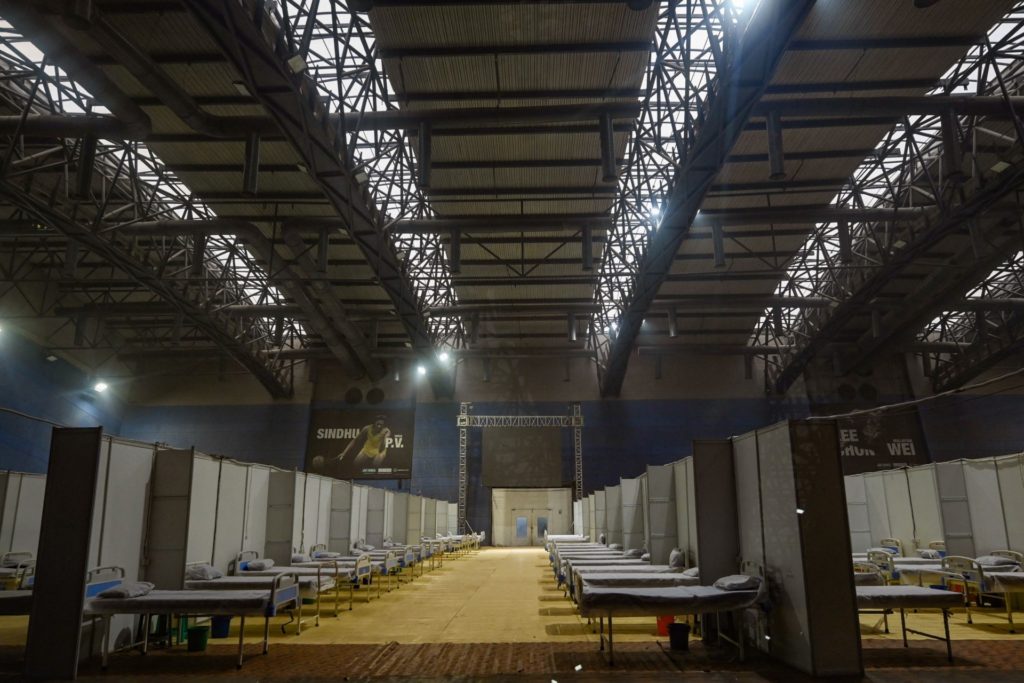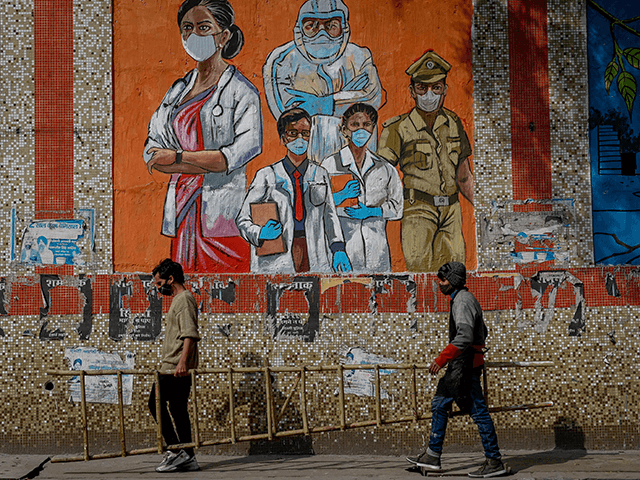India’s two most populous cities, New Delhi and Mumbai, have recorded a sharp decrease in their coronavirus caseload and hospitalizations in recent days, the Wall Street Journal (WSJ) reported Wednesday.
“In New Delhi—India’s second biggest city—new cases have dropped for five days straight after hitting a high of 28,867 last Thursday [January 13],” the newspaper reported on January 19.
“In Mumbai, the financial capital and most populous city, 6,149 new daily infections were reported on Tuesday [January 18], after a peak of 20,971 cases on Jan. 7,” according to WSJ.
Local government officials in both New Delhi and Mumbai said this week about 80 percent of hospital beds in their respective cities “are empty,” indicating hospitalizations due to the disease are also down.
WSJ on Wednesday seems to have referred to New Delhi when it meant greater Delhi, since Delhi’s population of 31 million is counted as India’s second-largest. New Delhi is the national capital of India. It is located within Delhi, which is also known as India’s National Capital Territory (NCT). Mumbai, India’s most populous city, is home to around 21 million residents. India has the second-largest population in the world, with 1.39 billion inhabitants.

Medical beds are lined up inside a ward at the Commonwealth games (CWG) village sports complex that is temporarily converted into a Covid-19 coronavirus care center, in New Delhi on January 5, 2022. (MONEY SHARMA/AFP via Getty Images)
India suffered a massive wave of the Chinese coronavirus in 2021 that may have infected more than two-thirds of its population according to an antibody study released by the state-run Indian Council of Medical Research (ICMR) in July 2021.
“Two-thirds of the general population above the age of six, or 67.6 percent were found to have SARS-CoV-2 antibodies in the latest national serosurvey,” ICMR Director General Balram Bhargava told reporters at the time.
“SARS-CoV-2” is the type of coronavirus that causes a disease named “COVID-19,” which is also known as the Chinese coronavirus. Scientists conduct a “serosurvey,” or serology survey, by testing blood samples for the presence of antibodies produced against a virus. A person’s immune system typically produces antibodies, or specific proteins, after a viral infection to provide future immunity against the same virus. Chinese coronavirus antibodies form about two to three weeks post-infection.
Some health experts speculate that India’s natural herd immunity against the Chinese coronavirus, coupled with the overall mild symptoms caused by the latest strain of the disease (omicron), have allowed the nation to weather its latest wave of the virus.
“The virus is meeting up with a whole population of people already previously infected and immune or vaccinated and immune,” T. Jacob John, a retired professor of virology at the Christian Medical College in southern India’s Vellore city, told WSJ on January 19. “That adds to the mildness of the disease.”

COMMENTS
Please let us know if you're having issues with commenting.